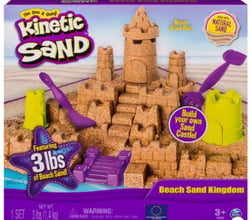Sensory bins have been the one resource I find I can pull for any child working on any goal at any age. They are extremely open-ended and adaptable, giving the much-needed flexibility to the variety of students seen in the schools. Sensory bins are also my most requested activity from my speech students. Because the kids are hands deep in the bins, though, hygiene is of the utmost importance*.
Ideas for sensory bins:
I prefer to keep my bins simple. A fan favorite is when the kids are provided their own bin of kinetic sand with hidden “buried treasure”. I also give them a tray to put under their bin to help keep messes contained. They get to dig through the kinetic sand while trying to find all 15 pieces of buried treasure (I use plastic gems from Michaels). Every time they find a gem, they have to say a word with their speech sound 10 times. Sometimes I’ll hide mini objects that contain the student’s speech sound too. After they find all the gems, they then get to hide the gems back in the kinetic sand for the next group of kids.
Another sensory bin staple that really engages kids is Mad Mattr. Mad Mattr is like kinetic sand, but it holds its shape like clay. With Mad Mattr, I give my students some time to create an object that has their speech sound in it. Then they may make sentences about their object. Or, if they are working on language goals, I may ask each student to create an object of their choice. Then, the group will take turns describing what they have made.
And finally, seasonal sensory bins. These are fantastic to use to work on language goals. You can work on following directions, sequencing, expanding utterances, describing, object function, comparing/contrasting, the list is endless. Truly. In the winter time, use some fake snow. Or plastic snowflakes, throw in some ornaments. Add whatever you have laying around. Or visit the Dollar Tree and feast your eyes and senses on sensory bin materials galore. For the fall, gather up some leaves. Or shred some orange, brown, and red paper. Add acorns and pine-cones. Throw in some rocks from your backyard for good measure. For the spring, use that bag of dried black beans that has been sitting in the back of your cupboard for the past 17 months. Add some plastic flowers, a plastic shovel, some moss. Cut and laminate a picture of the sun. Boom. You have a mini garden. Now you can talk about the life cycle of a plant or gardening. And for the summer? Blue water beads with laminated pictures of sea animals. Or shredded blue paper with mini objects of sea animals. Or kinetic sand with sandcastles and a paper umbrella you got from that fancy drink at the local hibachi restaurant.
The best part about sensory bins is that there is no right way to do them. They are meant to be creative and special to best fit your individual vision and needs for speech therapy. My personal sensory bins are locked away at my school, so I’ve attached some online inspiration just in case the mood strikes, and you want to create some sensory bins of your own.






* I require the kids to hand sanitize and/or wash hands before using any of the sensory bins. Given the current circumstances, it might be a while before we can start pulling back out our bins and using them with our students.
Author: Rachel Steinberg, CF-SLP







